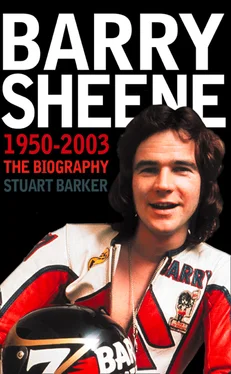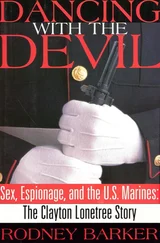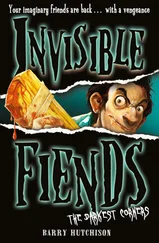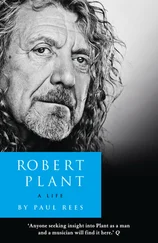Although Barry insisted that his dad never forced him into his track debut, it’s tempting to think he must have been at least a little curious to see how his boy would go round a circuit even if Barry didn’t seem too desperate to find out for himself. He hadn’t shown much competitive spirit at school or in his early jobs, so why should things be any different now?
Barry’s competitive career had actually started in trials riding some years before. Trials is a sport where riders negotiate near-impossible obstacles such as logs, barrels and rock faces at very low, often dead-stop speeds. The emphasis is on precise throttle control and balance, and as such it’s a good way for riders to hone their skills. The only problem was that it didn’t involve speed, and Sheene liked his speed. Despite this, Barry had shown promise in the early stages of most of the events he entered, but he struggled to maintain enough interest and concentration in the sport to make further progress. He was more engaged by the ground between the marked-out sections on the course where he could indulge in sudden bursts of speed and practise the wheelies he’d later become renowned for. In the end, it just wasn’t the sport for him. Road racing, however, was to prove a different matter entirely; it was to be the sport for which Barry had an innate aptitude.
Running in a racing motorcycle, like running in anything else, is a progressive business. It’s all about getting some steady miles on the clock to ensure everything is bedded in correctly before the machine is thrashed near to death by whoever races it. Even so, there was an inherent danger in the exercise for Sheene because every one of Frank’s new Bultacos in the past had seized on their initial outings. In other words, the engines had locked solid in mid-flight, and that usually ends with the rider being thrown off the bike unless his reactions are quick enough to allow him to pull the clutch in and freewheel to a standstill. This time round, the bikes didn’t seize. Barry found he’d actually enjoyed himself riding round the same track on which he’d watched his heroes racing for so many years. Brands Hatch, situated to the south-east of London, was Sheene’s ‘home’ track. He’d been there countless times and was familiar with the famous corners like Paddock Hill Bend, Druids and Clearways.
As things turned out, the day’s testing went so smoothly that Frank asked Barry to do some further bedding-in the following week. By that point the bikes had some miles under their belts and Barry was able to pick up the revs and push a good bit harder. He was also much more familiar with the track layout, the correct lines to take and the whole race-track environment, all of which is very alien to beginners. Being let loose on a circuit where there’s no cars, trucks or buses coming the other way, no speed limits, no mirrors on your bike and no restrictions or guides as to where you should position yourself on the road takes a bit of getting used to, even if you are Barry Sheene. But by the second weekend of testing, Barry was looking like he’d been born to it, and the fact didn’t go unnoticed. Reports from trackside marshals started to filter back to Frank that his son was looking a bit handy out there on the Bultacos; in fact, he looked faster than many racers those same marshals had seen. Maybe Barry should try his hand at racing? Frank related the news to his son, and Barry admitted to letting the praise go to his head. He readily agreed that maybe the time was right to carry on the family racing tradition and get out on the track in anger for the first time.
It was March 1968 and Sheene was 17 years old when he lined up on the starting grid, his gangly figure dwarfing the little 125cc Bultaco, for his first ever race. By today’s standards that’s pretty old – Valentino Rossi, for example, was a world champion at the same age in 1997 – but back in the late sixties it was more in keeping with the norm. It was an impressive debut by anyone’s standards. Sheene had worked his way up to second place in the race and was threatening the leader Mike Lewis when it all went wrong: the Bultaco seized, as it had never done during the running-in period, and spat its rider off over the handlebars. It wasn’t Barry’s fault in any way, but his detractors have often sniggered over the fact that Sheene crashed in his very first race. Indeed, that first race established a pattern that was to become all too familiar for Barry Sheene: being on the edge of glory just moments before a fall.
James Wilson was having only the second outing of his racing career that day on a 204cc Elite-engined Ducati. He recalled, ‘I remember I went up the inside of Sheene at Druids on one lap then went down through Southbank, and then bang, my clutch went and Barry came flying past me. His Bultaco was very quick, but then he locked up as well and crashed, although it wasn’t a bad one. The van took us back to the paddock together and we nattered in the van quite a bit. There was none of this “I’m a hero” kind of stuff. I knew about Barry from the paddock; he was the guy with the long blond hair who was always having a laugh and smoking a fag. He looked like a bloody good rider even back then; he really stood out. I mean, I stood out as well, but I had no help at all while Barry had his mum and dad, his sister and a van filled with all the right stuff. He didn’t have loads of money but he had enough, and he had a wealth of experience because of his family background. I was envious, not jealous, of the help Barry had. I knew then that he was going somewhere because he could ride and he had the right back-up as well.’ Wilson also remembered Sheene drawing attention to himself in the paddock that day, one of the few times anyone can remember him being violent. ‘I remember he punched the lights out of somebody that day because they owed money to Franco. I don’t know if he ever got the money but I doubt if the guy ever went near Barry again.’
Money aside, Frank Sheene must have been wondering what he’d got his son into when he learned that Barry had banged his head quite badly, lost some skin off his hands and cut his lip. Protective racing gear in the late sixties was extremely primitive compared to modern helmets, leathers, gloves and boots; a rider would probably be completely unscathed if he had a similar crash today. As it was, Sheene displayed admirable courage by ignoring his injuries and any psychological effects of the crash, and by refusing to be carted off by the circuit ambulance to hospital for a check-up. Instead he lined up to take part in the 250cc race on his other Bultaco.
Frank hadn’t wanted Barry to go back out again, but, showing the guts and determination that would eventually make him famous, he went out and finished third in the first event he ever completed. In a way, that first race day was a microcosm of Sheene’s career. He rode well, crashed, ignored his injuries and came back to finish strongly, both defiant and jubilant. He proved right from the start that he wasn’t a quitter.
A rostrum position for his first-day’s racing was a great achievement, but an even better result wasn’t very far away. Just one week later, and again at Brands Hatch, Barry took his first race win, and he did it in style by an incredible 12 seconds. And the best was yet to come. Frank had a special 250 Bultaco he had bored out to a larger 280cc capacity, and he wanted to know how it would compare against the machines in the 350 race. As things turned out, the bike didn’t compare – it totally dominated. Beaming with pride, Frank watched his son, and his project bike, finish half a lap ahead of the rest of the field, Barry romping home to take his second victory of the day.
Sheene junior was ecstatic. He might have been shaking with excitement after his first race win, but second time round he was completely overjoyed. Having proved to any doubters that his first victory was no fluke, he suddenly found himself the centre of attention in the paddock as members of the press and fellow racers gathered round to congratulate him. Keener paddock observers realized that the gangly Londoner wearing a cheeky smile from ear to ear was a star in the making. Those who didn’t take notice soon would, because Barry Sheene had finally arrived and motorcycle racing would never be the same again.
Читать дальше












